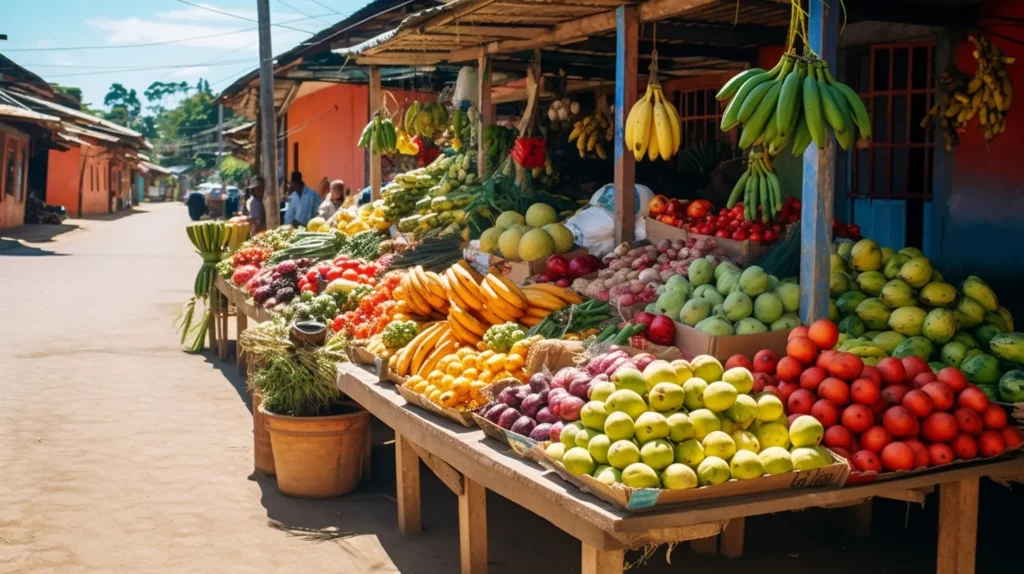Colombia is known for its rich agricultural heritage, boasting a wide array of delicious and exotic fruits and vegetables.
Exploring local markets and grocery stores in Colombia provides a fantastic opportunity to immerse yourself in the country’s vibrant culinary culture.
In this article, we will guide you through the process of buying fruits and vegetables in Colombia in Spanish, while introducing you to some unique and unusual varieties that are indigenous to the region.

Essential Vocabulary
To kickstart your journey into Colombian fruit and vegetable shopping, familiarize yourself with these essential Spanish terms:
- Fruits: Frutas
- Vegetables: Verduras, Vegetales
- Market: Mercado
- Grocery store: Tienda de comestibles
- Fresh: Fresco/a
- Ripe: Maduro/a
- Organic: Orgánico/a
- Seasonal: De temporada
Popular Fruits and Vegetables
Colombia is home to a wide variety of fruits and vegetables that are popular both domestically and internationally. Here are some commonly found options:
- Bananas: Bananos
- Oranges: Naranjas
- Pineapples: Piñas
- Mangoes: Mangos
- Avocados: Aguacates
- Tomatoes: Tomates
- Cucumbers: Pepinos
- Carrots: Zanahorias
- Potatoes: Papas
- Onions: Cebollas
Unique and Unusual Fruits
Colombia is also known for its abundance of unique and exotic fruits that are not commonly found in other parts of the world. Here are a few examples along with their descriptions:
- Lulo: Lulo is a small, orange fruit with a tangy and citrusy flavor. It is often used to make refreshing juices and desserts.
- Guanábana: Guanábana, also known as soursop, is a large green fruit with a spiky exterior. Its creamy white flesh has a sweet and slightly sour taste, making it perfect for desserts and beverages.
- Maracuyá: Maracuyá, or passion fruit, has a vibrant purple or yellow exterior with a gelatinous and aromatic pulp. Its distinct flavor is both sweet and tangy, adding a unique twist to juices and desserts.
- Uchuva: Uchuva, also called golden berry, is a small orange fruit enclosed in a papery husk. It has a sweet and slightly tart taste, making it a popular choice for salads and jams.
- Granadilla: Granadilla is a round fruit with a hard shell that opens to reveal a jelly-like pulp filled with edible seeds. It has a sweet and floral flavor, often enjoyed on its own or in fruit salads.
Conversational Phrases
To engage with vendors and purchase fruits and vegetables in Colombia, here are some useful phrases:
- ¿Cuánto cuesta esto? (How much does this cost?)
- ¿Está maduro/a? (Is it ripe?)
- ¿Tienes más opciones de frutas/verduras? (Do you have more fruit/vegetable options?)
- ¿Puedo probar uno antes de comprarlo? (Can I taste one before buying it?)
- ¿Cuál es la fruta/verdura de temporada? (What is the seasonal fruit/vegetable?)
Exploring the local markets and grocery stores in Colombia is a sensory delight, and by using these phrases, you can interact with vendors, learn about their produce, and indulge in the freshest fruits and vegetables.
Summary
Buying fruits and vegetables in Colombia is a delightful experience that allows you to immerse yourself in the vibrant flavors and colors of the country’s produce. By familiarizing yourself with essential vocabulary, popular fruits and vegetables, and unique varieties, you can navigate the markets and grocery stores with confidence.
From the familiar bananas and oranges to the exotic lulo and guanábana, Colombia offers a diverse range of fruits that will tantalize your taste buds. Don’t forget to explore the unique vegetables like uchuva and granadilla, which add a touch of novelty to your culinary adventures.
Engaging in conversations with local vendors using phrases such as pricing inquiries, checking for ripeness, and asking about seasonal options will enhance your shopping experience. Take the opportunity to sample the fruits before making a purchase and learn more about the local produce from those who know it best.
As you explore the markets and grocery stores, savor the opportunity to discover new flavors, support local farmers, and incorporate fresh, wholesome ingredients into your meals. Colombia’s abundant produce will inspire you to create delicious dishes and beverages that reflect the country’s rich culinary heritage.
So, venture into the colorful world of fruits and vegetables in Colombia, embrace the unfamiliar, and delight in the bountiful offerings of nature. With this guide and a curious spirit, you are ready to embark on a flavorful journey through the Colombian culinary landscape.
¡Buen provecho! (Enjoy your meal!)

